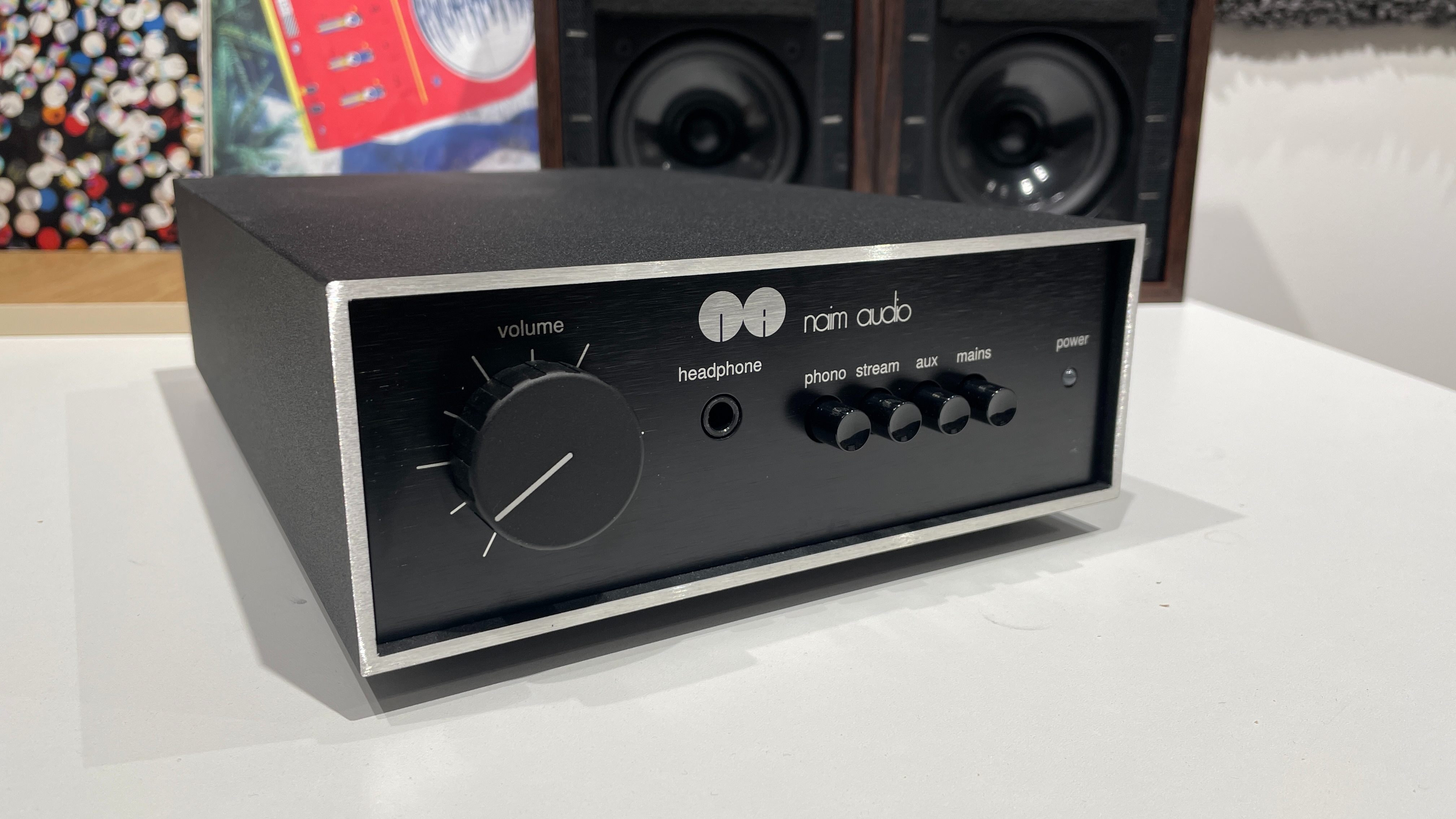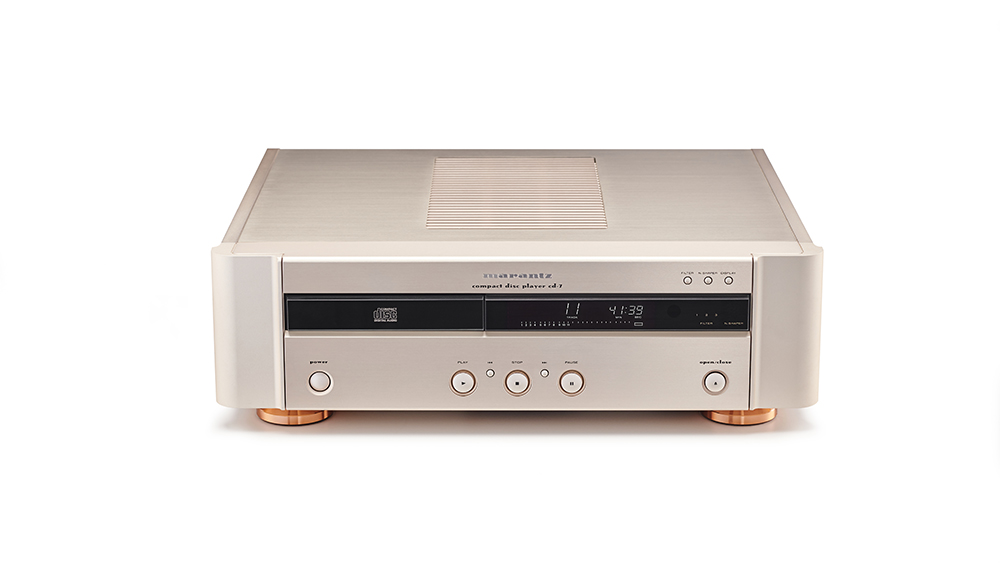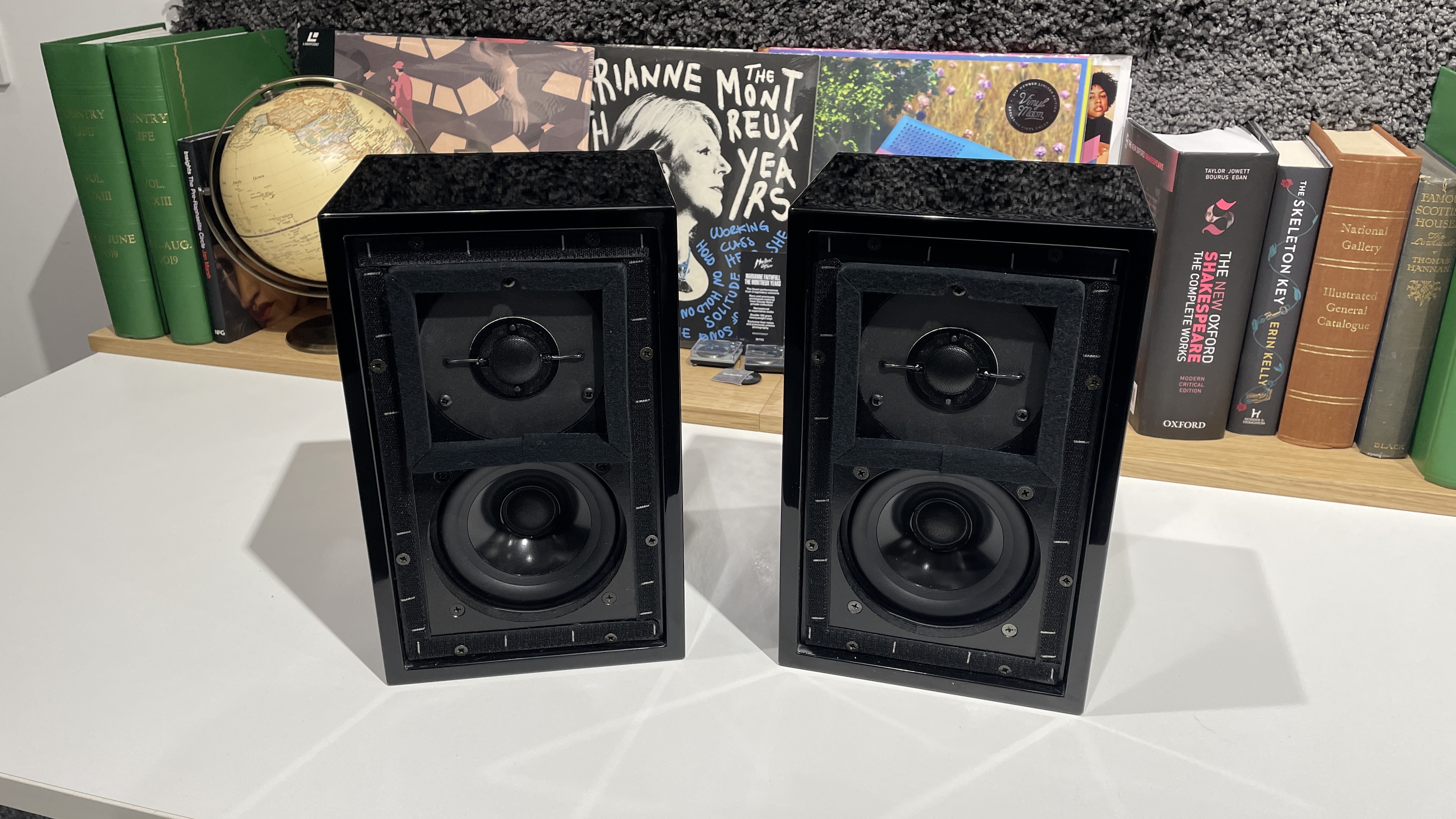Is hi-fi really getting better? Our technical editor ponders its progression
The answer isn't black and white

Sitting in front of my MacBook, my deadline looming large, I find myself distracted by the hefty discount currently available on Naim’s limited edition Nait 50 integrated amplifier. It was priced at £2699 in the UK when it launched in mid-2023, but it's now available at a whopping £1000 off at numerous outlets. I'm old enough to remember the original 1983 Nait model it pays homage to, so this product has plenty of emotional pull on someone like me – just as the company intended, of course! Admittedly, I’m tempted.
The Nait 50 may look close to the mirror image of the original, but inside is an all-new design. Having heard it, I can confirm its ability is everything a modern Naim integrated amplifier should be, even if the sonic presentation has been tweaked to echo that of the 1980s Nait. Compared with Naim's current Nait XS3 and SuperNait 3 duo, it's more characterful, sounding appealingly direct, if less mature, than its more mainstream siblings.
However, all of this thinking about the Nait led me to wonder whether hi-fi has really improved over the years. I’m still unsure of the answer, despite having written What Hi-Fi?’s 'That Was Then' retro feature (where I compare contemporary products with their ancestors) for almost two decades.

In terms of build, finish and usability, I have no doubts that things have improved. Compare the construction and finishing quality of products from two or three decades ago with their modern counterparts, and there is no real doubt. Classic products such as the Arcam A60 amplifier, Marantz CD63 Mk II KI CD player, Bowers & Wilkins DM602 S2 speakers and, yes, Naim’s original Nait 1 amplifier may have topped their class in those respects at the time, but through today's lens almost all seem amateurishly built.
In many ways these would have been simpler designs, so there is a fair chance that reliability could still be competitive with today’s products – possibly even better given that they would have been designed to be repaired rather than replaced (as seems the modern way) if something goes wrong.
When it comes to sound quality, however, I’m conflicted. Having spent considerable time with 'classic' digital high-end products such as the dCS Elgar DAC, Chord QBD76 DAC and the Marantz CD7 CD player, I believe digital audio has advanced significantly over the years. Great as these products were in their day, comparisons with modern equivalents from the same brand invariably reveal notable shortfalls in detail resolution, transparency and dynamic expression. Older digital products just sound more mechanical to me, lacking the sonic naturalness I now expect. This doesn’t mean that they can’t sound good – the Marantz CD7 is still something of a charmer after all these years – but newer designs get even closer to capturing the essence of a recording. That is why we obsess over hi-fi in the first place, right?

But I am less certain of the gains made by modern record players, analogue electronics and speakers. I don’t doubt that current analogue products dominate in the same areas as their digital counterparts – detail resolution, transparency and dynamic expression. However, the mature nature of analogue engineering principles and associated technologies hasn’t left the gap between old and new as wide as it is with digital.
Get the What Hi-Fi? Newsletter
The latest hi-fi, home cinema and tech news, reviews, buying advice and deals, direct to your inbox.
I can listen to the KEF Reference 104/2 floorstanders from the mid-80s and still enjoy them as much as a current premium tower such as the multi-Award-winning Spendor A7. The Spendors are the more transparent performers in terms of detail retrieval and tonality, but the KEF’s musical integrity still shines through. Ultimately, both have well-designed wooden enclosures with carefully engineered drive units. The difference comes down to better engineering tools, more sophisticated analysis software and improved materials rather than a fundamental shift in thinking. Having had plenty of experience with Naim’s amplification over the decades, much the same applies to its chrome bumper and olive models from the ’80s and ’90s when judged against the company's current output.

In the past few days I have been lucky enough to spend time with an original pair of limited-edition KEF LS3/5A 35th Anniversary speakers. The company made only 500 pairs of these in the mid-’90s, and they have now become something of a collector’s item.
This BBC-licensed design originally dates back to the mid-’70s, so is now around five decades old; yet, as they played, I couldn't help but fall for their wonderfully alluring midrange and convincing stereo imaging. Sure, modern alternatives trounce them in many respects, from loudness capability and dynamic contrasts to outright clarity. Despite that, the little KEFs still satisfy musically. With the right kind of music – something vocal-based or small-scale and acoustic – their delivery borders on magical. That the What Hi-Fi? reviews team then spent far too long figuring out a way to buy them is all you need to know about how we feel about these lovely little boxes.
So is hi-fi really getting better? On the whole, I would have to say yes. The best modern systems reveal far more of the recording and leave less of a fingerprint on the result. But that doesn’t mean older hi-fi components become outmoded in the way software-based products, such as older phones and computers, are.
In my experience, if the product is analogue-based and was considered good when it launched, there is a great chance it will still satisfy today. The build and finish won’t be as slick as something modern, but the thrill of listening to a great piece of music will still be there.
MORE:
That Was Then… KEF Reference 104/2 (1984)
That Was Then... Argo and Alecto: Michell's forgotten amplifier gems
We have built a gold-standard hi-fi system that delivers sweet streams aplenty – and looks good, too

Ketan Bharadia is the Technical Editor of What Hi-Fi? He has been reviewing hi-fi, TV and home cinema equipment for almost three decades and has covered thousands of products over that time. Ketan works across the What Hi-Fi? brand including the website and magazine. His background is based in electronic and mechanical engineering.
-
podknocker I've questioned whether new HIFI is better than the older stuff. CD does sound better than vinyl and I think the vinyl revival is just people getting on a lifestyle bandwagon, or perhaps is just a rejection of new things as a whole. Some people don't like change. I don't think, however, that new CD players sound much better than older ones. The Red Book standard must be over 42 years old now and there's nothing left to add. CD sound quality peaked many decades ago and shoving CD data through a modern DAC won't improve things. You can't add extra bits and quality to the CD format. Speakers are better, but many are still average compared to similar priced offerings years ago. New materials and sophisticated computer modelling has improved sound quality. Internal components have finer tolerances and many speakers can deliver incredibly high quality sound, while being very efficient at the same time.Reply -
JFC Reply
I totally agree with you that cd sounds better than vinyl, which is incredibly overrated! And I grew up with it in the 60s & 70s! Cd replay has actually come along way since the early days---Denon for example, with their creditable Alpha Processing! DSP room correction has been the game changer, certainly the modern processors available today, allowing you to finally achieve high quality sound in your living room.--- Definitely a route to go down if you have older quality equipment is to have it serviced, and better components fitted inside at the same time. A cost-effective way to hang onto your cherished equipment and to improve the sound of it as well.podknocker said:I've questioned whether new HIFI is better than the older stuff. CD does sound better than vinyl and I think the vinyl revival is just people getting on a lifestyle bandwagon, or perhaps is just a rejection of new things as a whole. Some people don't like change. I don't think, however, that new CD players sound much better than older ones. The Red Book stanfard must be over 42 years old now and there's nothing left to add. CD sound quality peaked many decades ago and shoving CD data through a modern DAC won't improve things. You can't add extra bits and quality to the CD format. Speakers are better, but many are still average compared to similar priced offerings years ago. New materials and sophisticated computer modelling has improved sound quality. Internal components have finer tolerances and many speakers can deliver incredibly high quality sound, while being very efficient at the same time. -
Ian AV Reply
Well said sir.podknocker said:I've questioned whether new HIFI is better than the older stuff. CD does sound better than vinyl and I think the vinyl revival is just people getting on a lifestyle bandwagon, or perhaps is just a rejection of new things as a whole. Some people don't like change. I don't think, however, that new CD players sound much better than older ones. The Red Book stanfard must be over 42 years old now and there's nothing left to add. CD sound quality peaked many decades ago and shoving CD data through a modern DAC won't improve things. You can't add extra bits and quality to the CD format. Speakers are better, but many are still average compared to similar priced offerings years ago. New materials and sophisticated computer modelling has improved sound quality. Internal components have finer tolerances and many speakers can deliver incredibly high quality sound, while being very efficient at the same time.
However, until recently I was still using my 1986 Philips CD650 with 16bit DAC and I always noticed crackling during Phil Collins - In the Air Tonight crescendo. But in later years, the COAX out, rare in those days, just high end devices had it, was used to send digital direct to my modern pre-amplifier. Crackling gone.
Agree on speakers, better, stiffer, lighter materials making far less coloured sound in theory.
What makes much of today's Hifi less so is the sound manipulation manufacturers have committed to make a pleasing sound to many, but coloured sound. QUAD's mantra in the 1970's was, piece of wire with gain. But even today's cables are manipulated. -
Ian AV Reply
Well, that makes three of us that don't see (hear) the emperors clothes.JFC said:I totally agree with you that cd sounds better than vinyl, which is incredibly overrated! And I grew up with it in the 60s & 70s! Cd replay has actually come along way since the early days---Denon for example, with their creditable Alpha Processing! DSP room correction has been the game changer, certainly the modern processors available today, allowing you to finally achieve high quality sound in your living room.--- Definitely a route to go down if you have older quality equipment is to have it serviced, and better components fitted inside at the same time. A cost-effective way to hang onto your cherished equipment and to improve the sound of it as well. -
djh1697 Ok, this isn't from this decade. Until around 2015 I was using the phono stage from my original Mission Cyrus 1 (1983 model serial 100356) to the input of my Naim Nait 5 via the Cyrus tape out. I tried offerings from Cambridge Audio, Rega, and QED. The Cyrus 1 phono stage just had more PRaT than the other devices. I said to my local Naim dealer that I would be in the market for a used Naim Stageline after borrowing his demo model for a few days. The Naim offers better resolution and more PRaT than the original Cyrus phono stage. The 1983 Cyrus had a plastic case and was falling to bits by this time. The Stageline was purchased. Sadly, the Naim products gave me the dreaded upgradeitus syndrome; the more you hear, the more you hear, the more you want.Reply
My turntable, a 1995 Pink Triangle Anniversary, can rival any LP12. It adds nothing to the music, in my view. -
JFC 3jReply
Well said also! Those early Philips cd players were good! Happy memories of my cd104 and 960 players.--- My biggest criticism of today's loudspeakers on the market are the aesthetics, until you really go into the higher price brackets. They just lack that quality look! (Cheap materials maybe). Regarding cables, some of the prices out there are insane! I love my DNM cables (Dennis Morecroft) with their sensible design at sensible prices.Ian AV said:Well, that makes three of us that don't see (hear) the emperors clothes. -
djh1697 Reply
A decent streaming source and a decent record deck far surpass the sound quality of a CD. Looked after older vinyl is far better than the new vinyl of today. The LP is now this largest selling physical media in the UK and the USA in both volume and value. Indeed, the record is now used in the measurement of the UK inflation figures.Ian AV said:Well, that makes three of us that don't see (hear) the emperors clothes.
https://www.theguardian.com/business/2024/mar/11/vinyl-records-uk-inflation-basket-taylor-swift-1989 -
podknocker Reply
Absolute nonsense. CD has better sound quality than vinyl could ever achieve. We have a vinyl revival because people tend to reject new technology, even if CD is 42 years old, because they don't understand it and it's suddenly trendy to buy an ancient format. This is the Luddite mentality which still thinks an ancient format is the last word in quality, when every technical specification of CD utterly trounces those of vinyl. Do you really think Philips and Sony spent years and milllions of pounds inventing a new sound format to make it sound worse than vinyl? The resolution of vinyl is far lower than CD, so it flatters poor recordings, while CD has higher resolution and will reveal poor recordings. Don't blame the resolution of CD making your crappy poor recordings sound dreadful. If you don't like the sound of CD, you are listening to poor recordings, flattered by vinyl for decades. Also, any streaming service using the masters used for CD production will have the same quality as CD. If Tidal masters are 16 bit at 44.1 kHz, then they will be bit for bit identical to CD and therefore sound exactly the same as CD.djh1697 said:A decent streaming source and a decent record deck far surpass the sound quality of a CD. Looked after older vinyl is far better than the new vinyl of today. The LP is now this largest selling physical media in the UK and the USA in both volume and value. Indeed, the record is now used in the measurement of the UK inflation figures.
https://www.theguardian.com/business/2024/mar/11/vinyl-records-uk-inflation-basket-taylor-swift-1989 -
JFC Reply
Sorry, what has the selling of vinyl and UK inflation figures got to do with sound quality? I was in HMV Bond Street the other day-- the price of Vinyl was insane! Nobody was buying it! There were plenty of people buying cds though.djh1697 said:A decent streaming source and a decent record deck far surpass the sound quality of a CD. Looked after older vinyl is far better than the new vinyl of today. The LP is now this largest selling physical media in the UK and the USA in both volume and value. Indeed, the record is now used in the measurement of the UK inflation figures.
https://www.theguardian.com/business/2024/mar/11/vinyl-records-uk-inflation-basket-taylor-swift-1989 -
JFC Reply
Totally agree with you!podknocker said:Absolute nonsense. CD has better sound quality than vinyl could ever achieve. Any streaming service using the masters used for CD production will have the same quality as CD. If Tidal masters are 16 bit at 44.1 kHz, then they will be bit for bit identical to CD and therefore sound exactly the same as CD.
